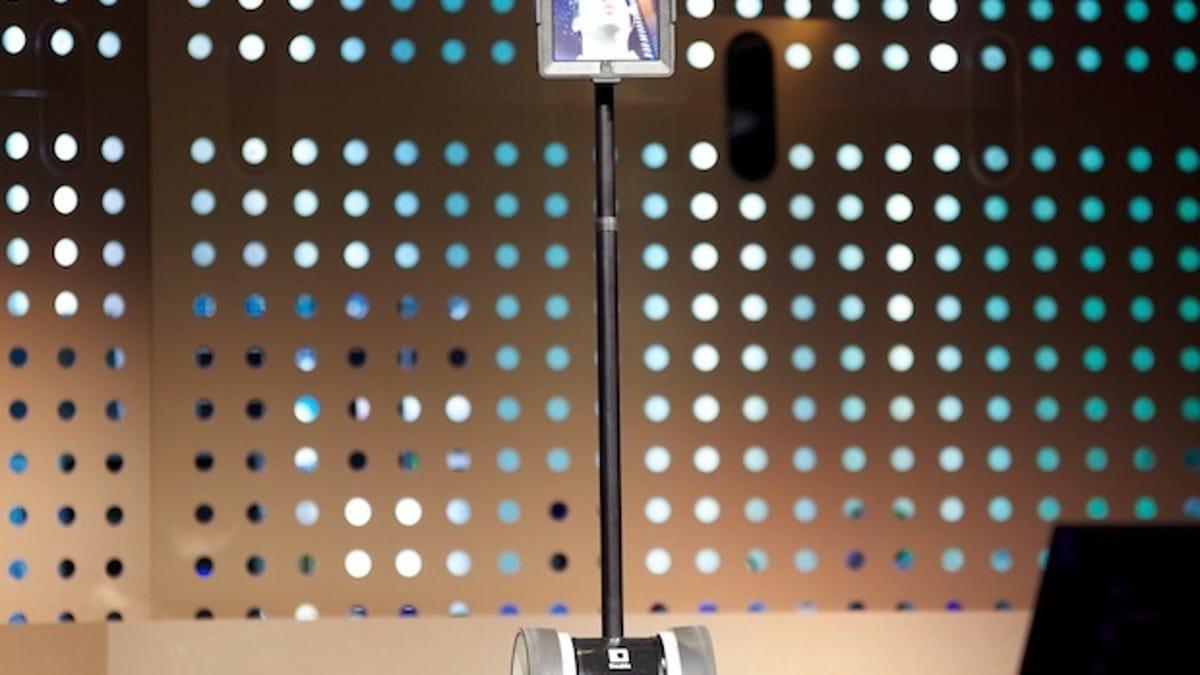Feeling remote? Try a $2,000 telepresence robot
For two grand, Double Robotics will sell you an iPad on wheels that delivers a physical presence at a distant location.

PARIS -- For telecommuters who just aren't happy with Skype videoconferences or Google+ hangouts, why not try a telepresence robot?
David Cann, co-founder and chief executive of Double Robotics, showed off such a beast today here at the LeWeb show. The $2,000 design looks, in Cann's words, like an iPad on a Segway.
The robot, called Double, is basically a mobile videoconferencing device. On the bottom is a pair of wheels and a motor; in the middle a thin stalk; and on the top a bracket with an iPad. The operator can control the robot remotely, steering it around with a smartphone.
The robot itself shows the operator's face on its iPad. It's a far cry from being there in person, but the company believes it makes remote workers "feel more connected with their colleagues."
It's also useful for remote tours of factories, museums, schools, and retail outlets, the company believes.
iRobot also has been working on telepresence robots with a design it showed off called Ava. Google Executive Chairman Eric Schmidt -- certainly more technophilic than the average person -- has spoken warmly of telepresence robots, suggesting that people in the future will dispatch them to attend concerts or meetings virtually instead of physically.
At $2,000, the Double isn't cheap, but Cann thinks it's a deal for what it does, and the startup's first production run sold out.
The company keeps costs down by using standard technology such as WebRTC for videoconferencing, Cann said.

